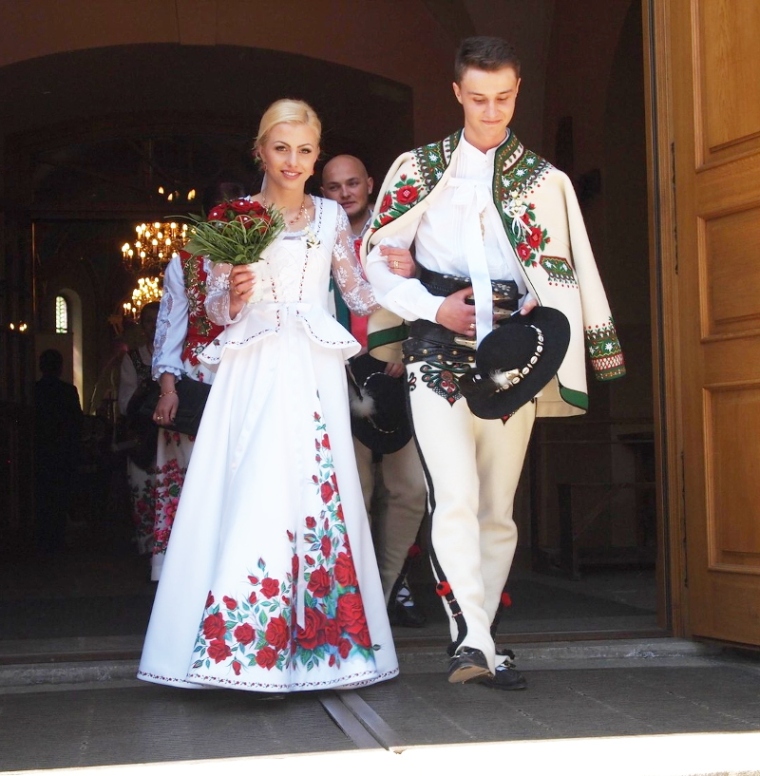
This is not a new trend, but something that’s been growing for many past decades and reached its peak in the recent years, with folklore traditions making a significant comeback into Polish culture. The trend has its roots in the region of Podhale, where a lot of local brides are wearing dresses with handpainted patterns.
Podhale is the southernmost region of Poland located just under the Tatra Mountains. It is known for exquisite folk culture and fashion that never stopped being a vital part of the local life – a great example of folk traditions that are still alive and evolving. People from Podhale are the largest and the most ‘visible’ group of Polish highlanders known abroad also by the Polish term of Górale (meaning simply: people of the mountains).
Górale from Podhale are still cherishing their folk traditions to a significant scale. Majority of local festivities and cultural events are often still accompanied by at least a few people dressed in traditional Podhalanian clothing. It’s no different with family events like the weddings, although many of them are organized in a modern fashion. For a long time it’s been mostly the men of Podhale still dressing in the original forms of their folk garments – they are still very particular about that nowadays and hardly change any elements of their fashion.
Podhalanian women tend to be a lot more creative, and the recent decades showed us a growing hot trend. It involves transfering various local decorative motifs (mainly floral patterns) onto the wedding dresses with the use of modern fabric paints. The dresses themselves can be either modern (with a great variety of cuts that are in at the time) or traditional ones (with a separate skirt and a ‘corset’ just like worn in the old days).
The decorations on the dresses have various local sources: there are patterns taken from the authentic Podhalanian embroidery, from traditional painted and printed headscarves, from various types of patterned textiles that were used in local outfits, from painted and carved interior decorations (it’s worth mentioning here that the region has its own long tradition of decorative painting in this style), and so on. Sometimes it’s simply the bride’s favourite type of flowers – a skilled artists can design any type of motifs using the local style. Regardless of the origins of the handpainted motifs, they blend exceptionally well with the men’s traditional garments and the trend has been present already long enough to become a tradition on its own.
Look below at some examples I’ve found – lovely dresses, mostly the traditional types, handpainted by a Podhalanian artist named Anna Maryniarczyk-Kubińska. Make also sure to visit her FACEBOOK and WEBSITE :)
The dress above is worth making an additional comment here. It’s painted to imitate a traditional Podhalanian embroidery motif with a dziewięćsił, flower that is very characteristic for the local embroidery and other crafts. The flower is a subspecies of a stemless carline thistle which grows in the Carpathian Mountains. Its Polish name ‘dziewięćsił’ means ‘nine strenghts‘ or ‘nine powers‘. In the folklore of Podhale people believed that healing powers of this flower are 9 times more powerful than any other herb. It’s been used in local folk medicine. Nowadays it’s partly endangered and protected by law as a rare plant.
All pictures via Anna Maryniarczyk-Kubińska.
If you want to compare these paints on dresses with traditional outfits of women from Podhale, you can check the tag ‘Podhale’ in my educational gallery presenting Polish folk costumes:
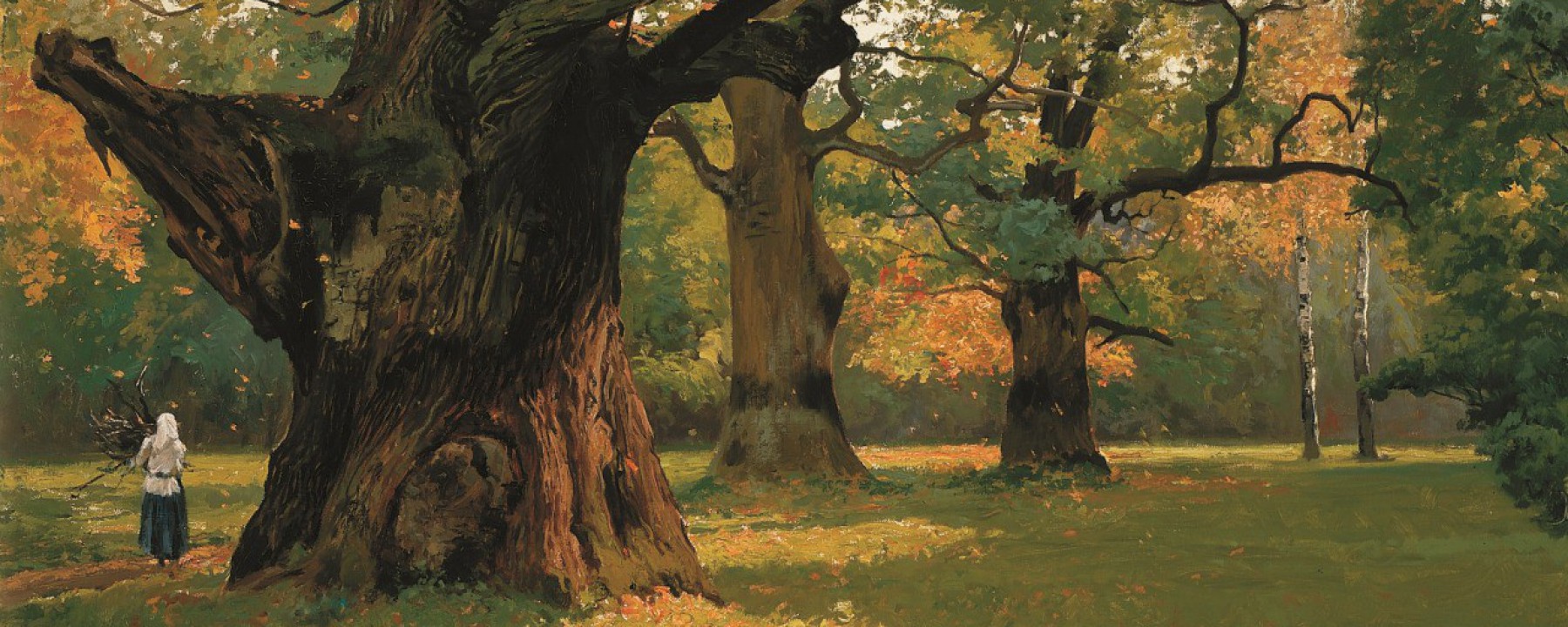
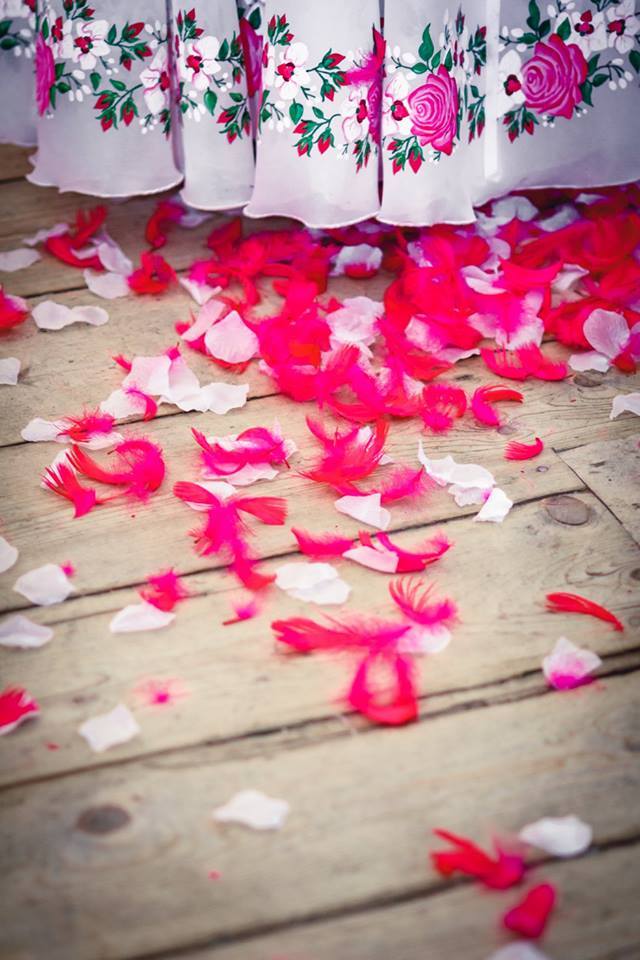
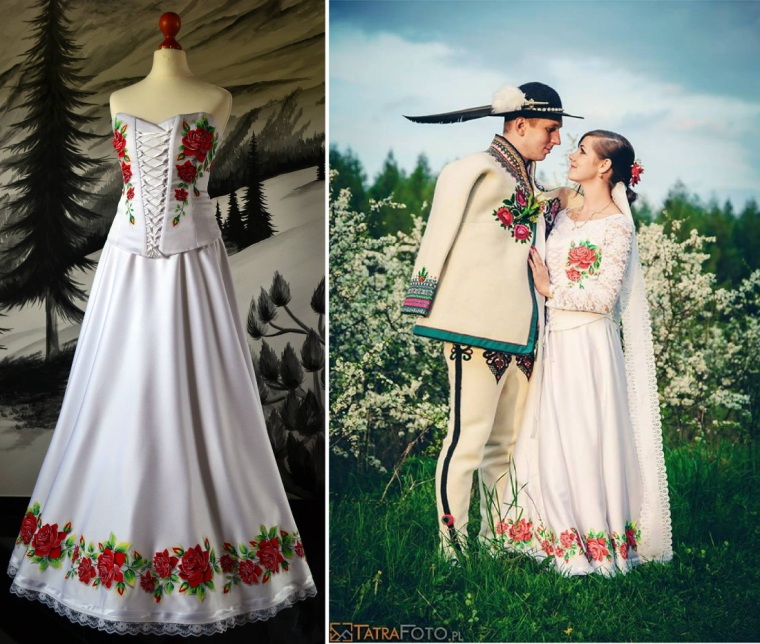
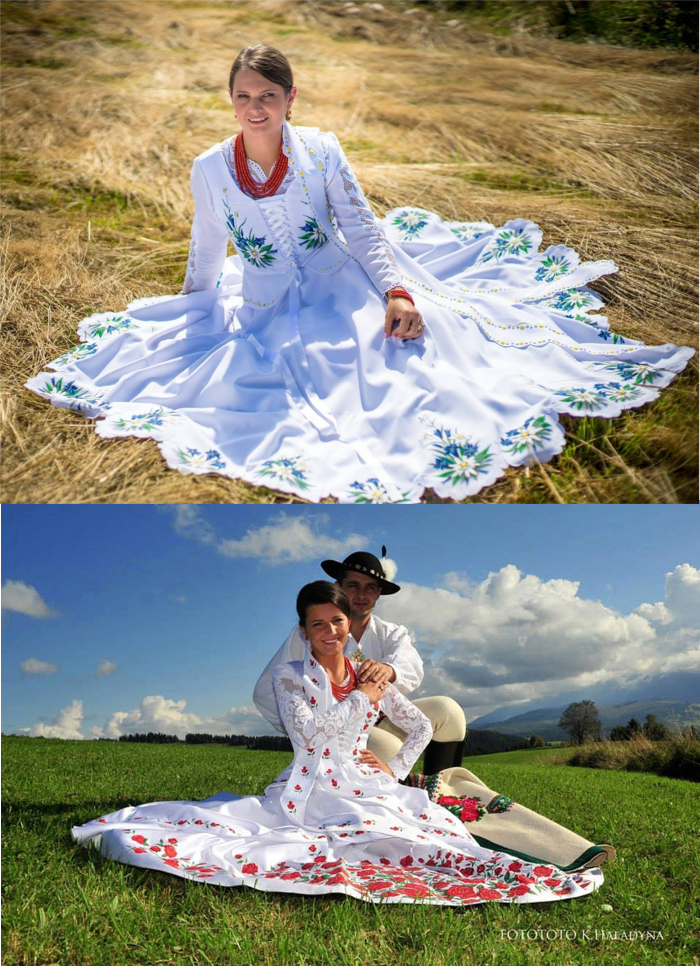

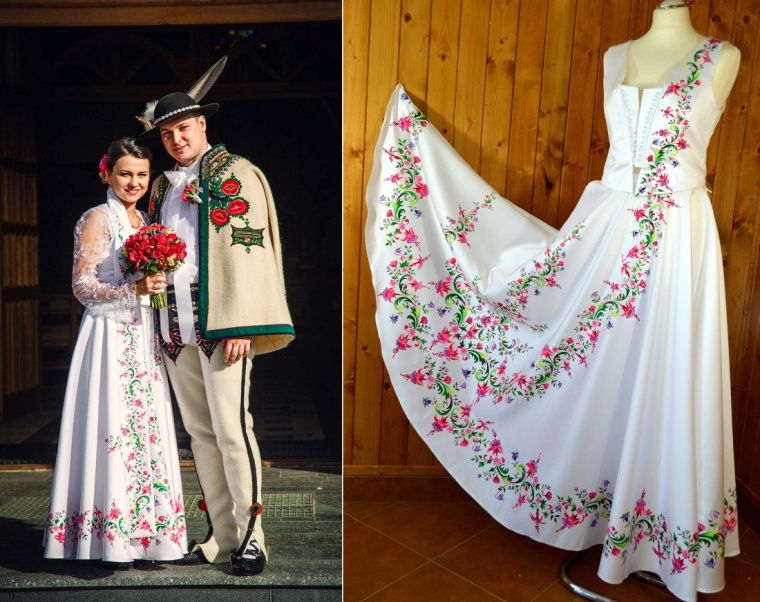

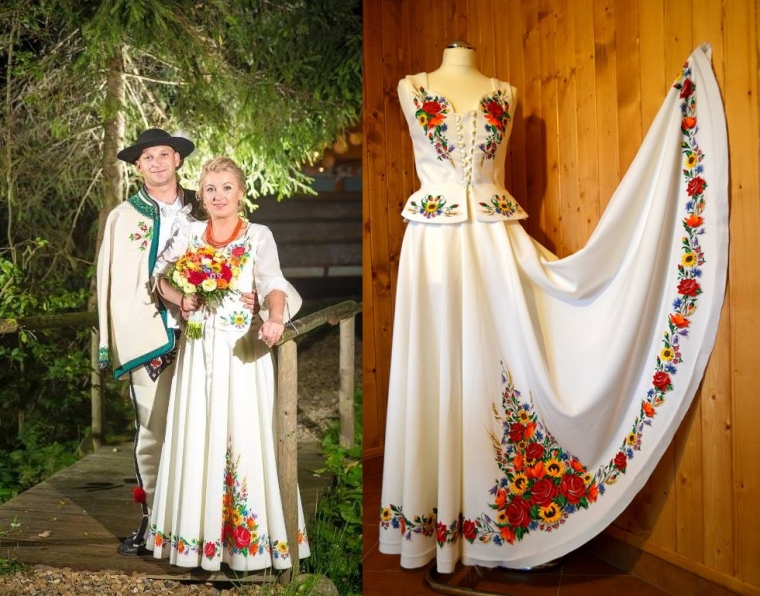




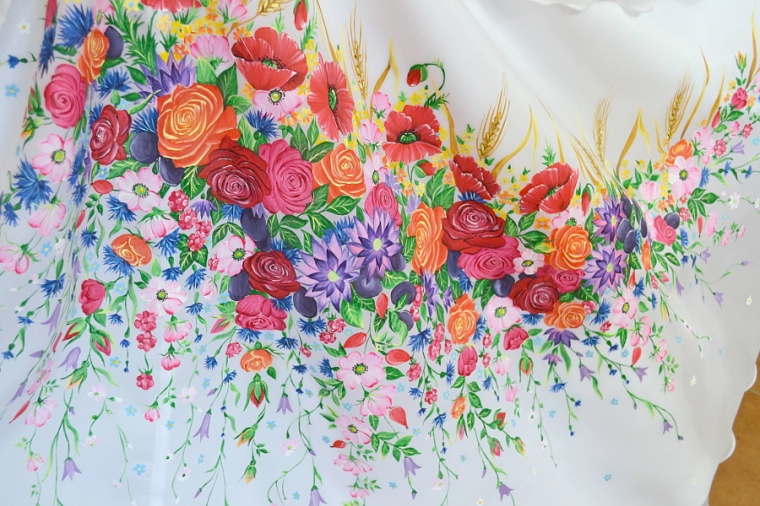


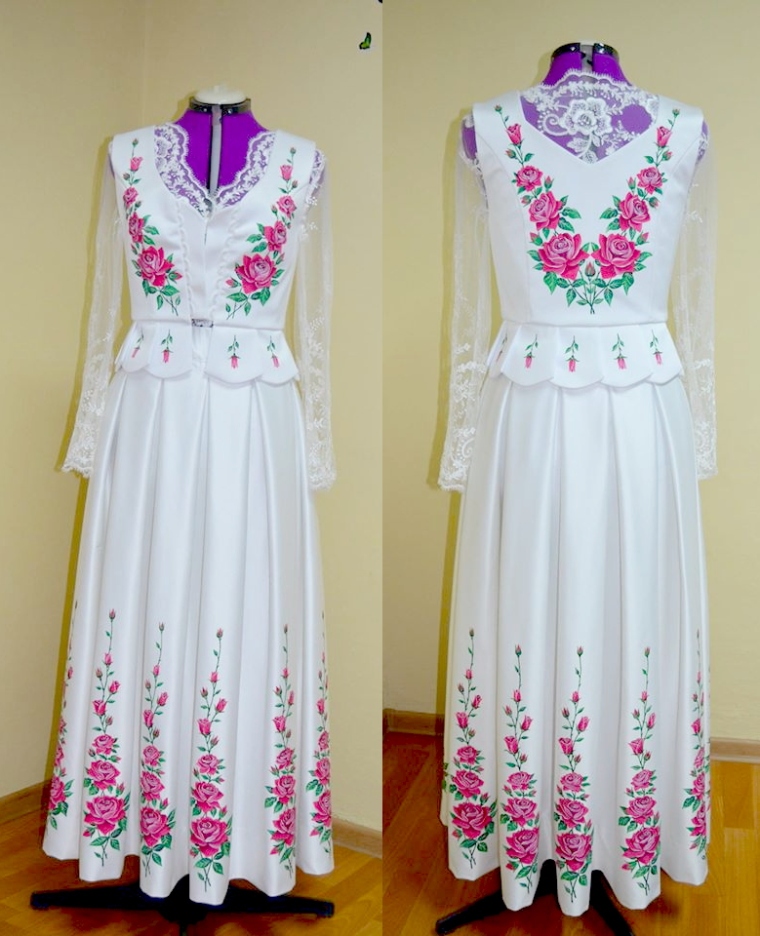
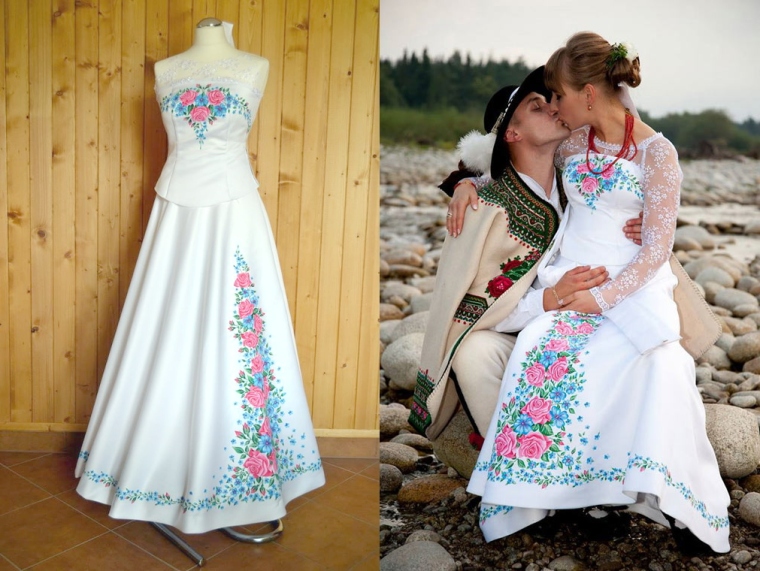

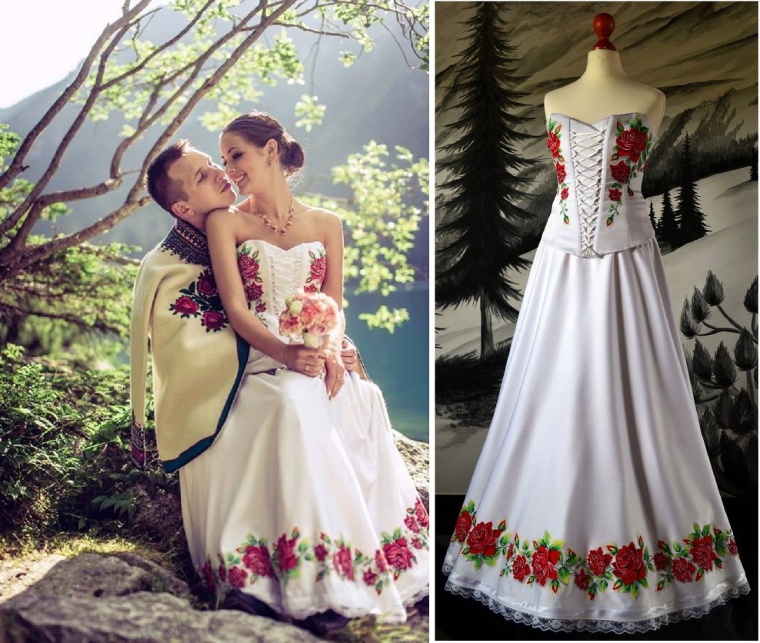

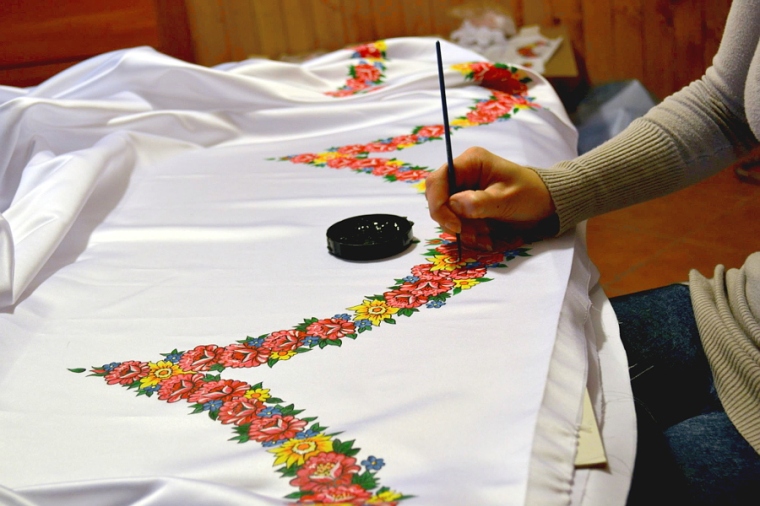





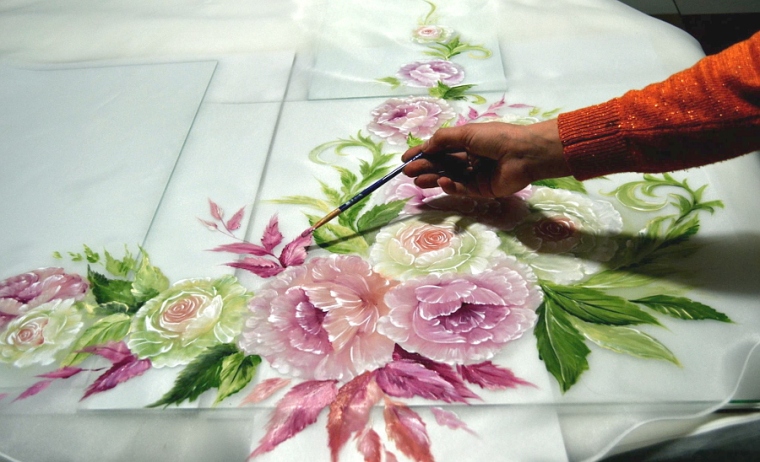
7 thoughts on “Growing trend: handpainted wedding dresses inspired by folklore of Polish highlanders”